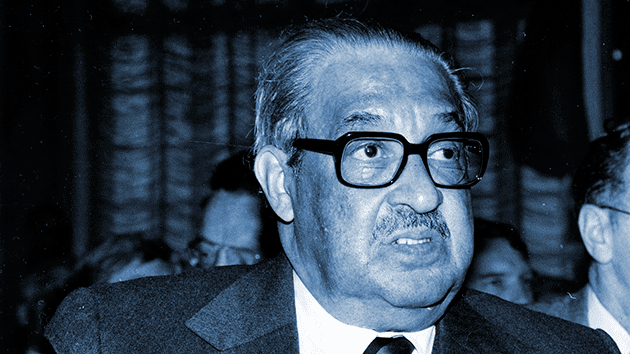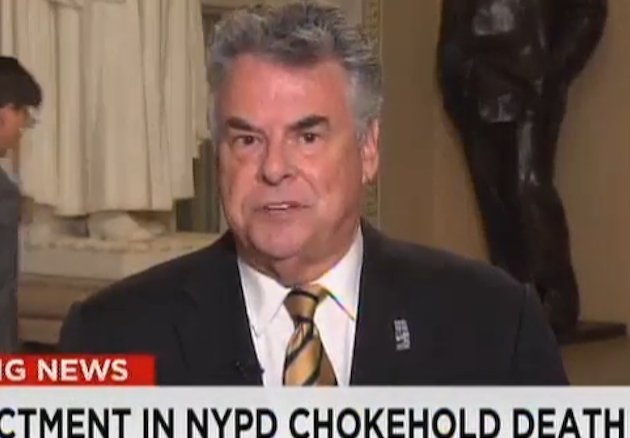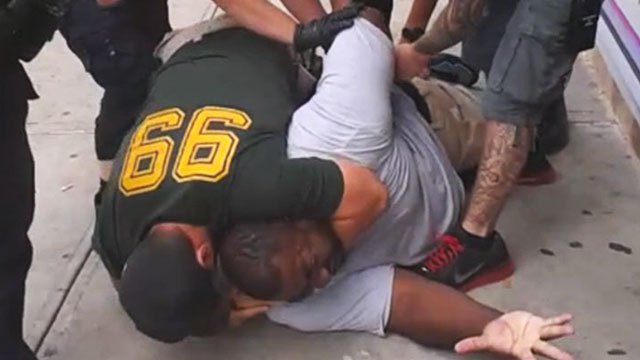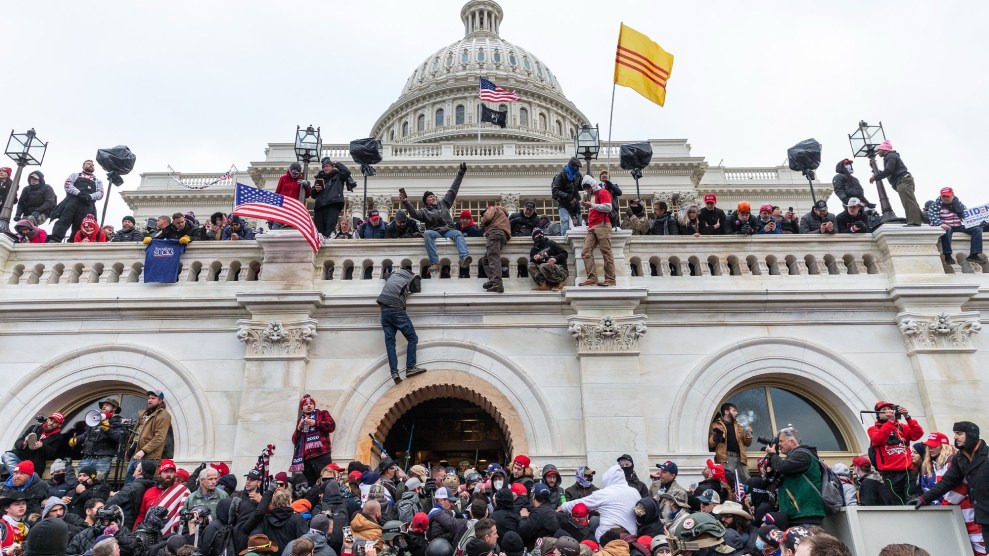
Supreme Court Justice Thurgood Marshall in 1977AP Photo
Early on the morning of October 6, 1976, 24-year-old Adolph Lyons was pulled over by two Los Angeles police officers for driving with a burned-out taillight. As the facts of the incident were later recounted by Supreme Court Justice Thurgood Marshall, “The officers greeted him with drawn revolvers as he exited from his car. Lyons was told to face his car and spread his legs. He did so.” After an officer slammed his hands against his head, Lyons complained that the keys in his hand were hurting him.
What happened next nearly killed him:
Within 5 to 10 seconds, the officer began to choke Lyons by applying a forearm against his throat. As Lyons struggled for air, the officer handcuffed him, but continued to apply the chokehold until he blacked out. When Lyons regained consciousness, he was lying face down on the ground, choking, gasping for air, and spitting up blood and dirt. He had urinated and defecated. He was issued a traffic citation and released.
Lyons, who was African American, sued the Los Angeles Police Department for damages and asked a federal judge to enjoin the further use of chokeholds except in circumstances where they might prevent a suspect from seriously injuring or killing someone. Lyons also argued that his constitutional rights had been violated by being subjected to potentially deadly force without due process.
His case, Los Angeles v. Lyons, eventually made it to the Supreme Court. In April 1983, the justices ruled against Lyons 5 to 4. The majority punted on the question of whether chokeholds are constitutional, instead finding that Lyons lacked standing to sue the LAPD since he could not prove that he might be subjected to a chokehold again.
Writing in dissent, Marshall blasted this as absurd: “Since no one can show that he will be choked in the future, no one—not even a person who, like Lyons, has almost been choked to death—has standing to challenge the continuation of the policy.” Lyon’s lawyer said the ruling turned any encounter with the police into a deadly game of chance. “The LAPD regulations mean Lyons everyday plays a game of roulette,” Michael Mitchell said. “The wheel has 100,000 slots. If the ball should fall in your slot, you die.”
In his opinion, Marshall presented a clear-eyed appraisal of the reckless use of chokeholds—a pattern of abuse most recently illustrated by the choking death of Eric Garner at the hands of a New York City cop. Marshall noted that three-quarters of the 16 people killed by LAPD chokeholds in less than a decade were black. Despite their dangers, LA cops applied chokeholds with indifference: One officer described suspects “do[ing] the chicken” while being deprived of oxygen. Officers did not recognize that chokeholds induce a flight response that may be perceived as willful resistance, and trainers did not tell rookie cops that chokeholds can kill in less than a minute.
Some excerpts from Marshall’s findings:
Although the city instructs its officers that use of a chokehold does not constitute deadly force, since 1975 no less than 16 persons have died following the use of a chokehold by an LAPD police officer. Twelve have been Negro males […]
“Of the nine deaths…the average duration of the choke where specified was approximately 40 seconds.”It is undisputed that chokeholds pose a high and unpredictable risk of serious injury or death. Chokeholds are intended to bring a subject under control by causing pain and rendering him unconscious. Depending on the position of the officer’s arm and the force applied, the victim’s voluntary or involuntary reaction, and his state of health, an officer may inadvertently crush the victim’s larynx, trachea, or hyoid. The result may be death caused by either cardiac arrest or asphyxiation. An LAPD officer described the reaction of a person to being choked as “do[ing] the chicken,” in reference apparently to the reactions of a chicken when its neck is wrung. The victim experiences extreme pain. His face turns blue as he is deprived of oxygen, he goes into spasmodic convulsions, his eyes roll back, his body wriggles, his feet kick up and down, and his arms move about wildly[…]
The training given LAPD officers provides additional revealing evidence of the city’s chokehold policy. Officer Speer testified that in instructing officers concerning the use of force, the LAPD does not distinguish between felony and misdemeanor suspects. Moreover, the officers are taught to maintain the chokehold until the suspect goes limp, despite substantial evidence that the application of a chokehold invariably induces a “flight or flee” syndrome, producing an involuntary struggle by the victim which can easily be misinterpreted by the officer as willful resistance that must be overcome by prolonging the chokehold and increasing the force applied. In addition, officers are instructed that the chokeholds can be safely deployed for up to three or four minutes. Robert Jarvis, the city’s expert who has taught at the Los Angeles Police Academy for the past 12 years, admitted that officers are never told that the bar-arm control can cause death if applied for just two seconds. Of the nine deaths for which evidence was submitted to the District Court, the average duration of the choke where specified was approximately 40 seconds.
While the case was being considered, the LAPD temporarily suspended its use of the bar-arm hold, where pressure is applied to the windpipe, and the carotid chokehold, where pressure is applied to the carotid artery. (Lyons had been subjected to a carotid hold.) LAPD Chief Daryl Gates also announced that his department was investigating whether carotid chokeholds were more likely to kill African Americans for physiological reasons. As the chief explained in November 1982, “We may be finding that in some blacks when it [the hold] is applied, the veins and arteries do not open as fast as they do in normal people.”
Gates hailed the Supreme Court’s subsequent ruling in Lyons as vindication that “this hold is not cruel and inhuman.” The court has yet to reconsider the constitutionality of chokeholds.















